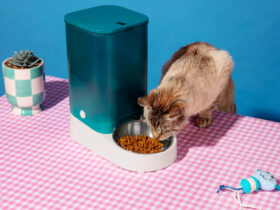How Long Does Dog Food Last? A Comprehensive Guide to Storage and Shelf Life
Introduction: Why Proper Dog Food Storage Matters?
The care for dogs, in addition to costing a lot of money, also requires attention and love they deserve. Moreover, caring for your dog by feeding them fresh and safe food is the first step to a happy and healthy pet. Therefore, you need to pay attention to avoid such questions as: How long does dog food last? Consequently, you can ensure your dog is fed fresh and not wasted, and furthermore, avoid possible health risks. Proper food storage is key to ensuring the food does not lose its nutritional value and remains a desirable flavor, and hence you are sure your little dog gets the best from each meal.
In addition, this detailed guide touches on the time a dog food packet remains unspoiled, elements that affect a dog food’s different features, appropriate storage techniques, and how to discover when dog food has gone wrong.

How Long Does Dog Food Last?
Let us examine this matter by scrutinizing the life of diverse dog food types.
1. Dry Dog’s Food (Kibble)
Dry dog’s food is usually more stable than other varieties thanks to the lower moisture it contains.
• Unopened Dry Dog’s Food: Unopened kibble typically has a shelf life of 12 to 18 months. You can easily find the expiration date printed on the package. However, this period may vary depending on the brand and its processing methods. Therefore, always check the expiration date to ensure the food is fresh and safe for your pet.
• Once you open a bag of dry dog’s food, it typically starts to go bad after 4 to 6 weeks if you don’t store it properly. Factors like maintaining freshness, keeping the bag sealed, and controlling the temperature play a significant role in slowing down the process. By paying attention to these details, you can ensure your dog’s food stays fresh and safe for longer.
2. Wet Dog’s Food (Canned)
Wet dog’s food again refers to the canned food which contains moisture; the material in this type of food decomposes more quickly.
• Unopened Wet Dog’s Food: Concentrated wet food comes in a sealed can and will last for 2- 5 years if stored in a cool dry environment. It is always important to go by the label and time the food product is expiring.
• Opened Wet Dog’s Food: After opening wet food should be kept in a refrigerator and must be used within 3 to 5 days.
3. Live or Frozen Dog’s Food
Real, derived, or freshly prepared dog food sold in the frozen section or home-delivered through subscription services, on the other hand, may be stored for less time since it contains fewer preservatives.
• Unopened Fresh Food: Normally it preserves on the refrigerator for about 1 – 2 weeks.
• Opened Fresh Food: Once opened, should be consumed within three- to four days.
4. Homemade Dog’s Food
The homemade dog’s food also has no preservatives, thus the food is highly perishable than commercial food.
• Refrigerated Homemade Food: This lasts about 3-4 days in the fridge.
• Frozen Homemade Food: Freezer storage should be proper so it can last up to 3 months.
Features That Define Durability of Dog Food
These include; Various circumstances that affects the freshness and safety of the dog food. Here are the key influences:
1. Type of Dog Food
Dry kibble, as well as most kibble, have a longer shelf expectancy compared to wet or fresh food and homemade food have the shortest shelf life.
2. Storage Conditions
• Temperature: It’s advised that dog food should be stored at temperatures below 77°F (25°C). Additionally, one of the most common adverse effects of heat exposure to food is that the oils used in the preparation of the meal end up becoming rancid.
• Humidity: Dampness and the highest humidity, consequently, lead to mold in dry food.
3. Packaging
• Original Packaging: Most companies, therefore, apply a suitable type of packaging that guarantees the product’s hermetic seal to maintain the freshness of the product.
• Opened Packaging: When it is opened its exposes to air which leads to increase rate of oxidation and spoils easily.
4. Preservatives
In fact, the commercialized dog foods that contain natural preservatives like vitamin E or citric acid may be depleted shortly as compared to the artificial preservatives.
5. Exposure to Light and Air
The nutrients can also be spoiled through exposure to air and sunlight.
How to Properly Store Dog Food
Proper storage, therefore, extends the shelf life of your dog’s food. Additionally, these tips will help keep your dog’s meals fresh and nutritious.
Fridge Open Cans: Store the remaining pour, slop into an aerodynamic hold and cover with a plastic cover before ice box.
Storing Dry Dog’s Food
Don’t Never Remove It From Its Bag: Most dog’s food bags are airtight and moisture resistant. Fold the top over tightly after each use.
Use Airtight Containers: When you do go to move food to a container, make sure it’s one that’s airtight to limit airflow and pest access.
Avoid Heat And Humidity: Store in a cool, dry place, such as a pantry or cupboard.
Storing Wet Dog Food
Fridge Open Cans: Store the remaining pour, slop into an aerodynamic hold and cover with a plastic cover before ice box.another post about Fleischmann’s organic beef recalled due to salmonella concerns, there are several things you should avoid when feeding your pet and some of these includes
Another post about Fleischmann’s organic beef recalled due to salmonella concerns, there are several things you should avoid when feeding your pet and some of these includes
Being able to determine when the food has gone bad for your dogs will save him from eating tainted food.
1. Unusual Odor
Decomposed dog’s food samples may have an off putting smell that resembles rancid or even souring.
2. Color or Texture Changes
Another case of spoilage is mold on the bags with dry food; the bags may change color or have clumps in them.
3. Pests or Insects
In case you find signs of insects or aspects of contamination on the food product, do not hesitate to throw away the food.
4. Refusal to Eat
Because of this change in smell or taste, dogs can naturally turn their snouts up at spoilt foods.
5. Expiration Date
In most cases ensure you check the best before date on the packaging of the product. Of course, if it remain looks okay, better not take your chances and do away with it.
Can You Freeze Dog Food to Extend Its Shelf Life?
Freezing is a great option for preserving dog’s food, but is it suitable for all types?
Benefits of Freezing Dog Food
• Extends the shelf life of wet, fresh, and homemade food.
• Retains nutritional value when stored correctly.
Tips for Freezing Dog Food
• Use airtight, freezer-safe bags or containers to prevent freezer burn.
• Divide food into single-serving portions for convenience.
• Label the containers with the date to track storage time.
Foods That Freeze Well
• Wet food (canned or pouch)
• Fresh and homemade food
Signs Your Dog’s Food Has Gone Bad
1. Unusual Odor
When food goes bad, it starts to smell rancid or sour, particularly when it is prepared for a spoiled dog.
2. Color or Texture Changes
Odor, fading, or lumps in dry foods are clear and noticeable signs of spoilage. Therefore, you should always inspect the food carefully before serving it to your pet.
3. Pests or Insects
In case you find signs of insects or aspects of contamination on the food product, do not hesitate to throw away the food.
4. Refusal to Eat
Because of this change in smell or taste, dogs can naturally turn their snouts up at spoilt foods.
5. Expiration Date
It is important that you should always read the labels of the packing and pay attention to the expiration dates. Most of the times if we are in doubt the food seems to be spoiled we better discard it.
Can You Freeze Dog Food to Extend Its Shelf Life?
Freezing is a great option for preserving dog food, but is it suitable for all types?
Benefits of Freezing Dog Food
• Extends the shelf life of wet, fresh, and homemade food.
• Retains nutritional value when stored correctly.
Tips for Freezing Dog Food
• Use airtight, freezer-safe bags or containers to prevent freezer burn.
• Divide food into single-serving portions for convenience.
• Label the containers with the date to track storage time.
Foods That Freeze Well
• Wet food (canned or pouch)
• Fresh and homemade food
Comparing Shelf Life: Dry vs. Wet Dog Food
| Feature | Dry Dog Food | Wet Dog Food |
|---|---|---|
| Unopened Shelf Life | 12–18 months | 2–5 years |
| Opened Shelf Life | 4–6 weeks | 3–5 days (refrigerated) |
| Storage Conditions | Cool, dry place | Refrigerate after opening |
| Moisture Content | Low (10–12%) | High (75–78%) |
FAQ
It’s time we tackled some common questions related to how long dog food lasts.
1. Has an open bag of dry dog food really expired?
Dry dog food for sale usually lasts 4–6 weeks when stored correctly in a cool, dry place – once opened, though.
2. And how can expired dog food affect my dog?
It is definitely possible to feed your dog expired dog food and cause it to get digestive issues, get food poisoning or be deficient in nutrients. Always throw away food that has expired.
3. Can old and new dog food be mixed?
The best way around this is to just not mix old and new food; doing so could ruin the other food by allowing the new to spoil.
4. Is wet dog food okay to leave out overnight?
Wet food should not usually be left out for more than 2 hours, as bacteria grow rapidly at room temperature.








Leave a Reply